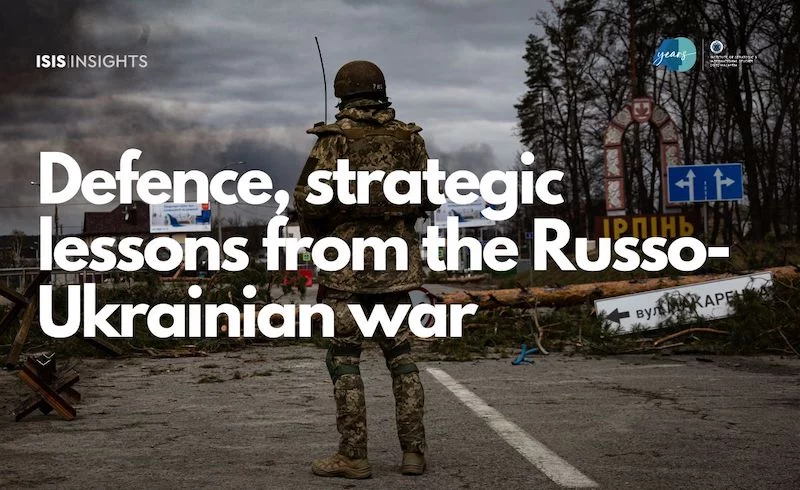Malaysia stuck with Russian arms, failure to advocate effectively for own rights
ON 24 February last year, Russian forces invaded Ukraine in what was expected to be a “quick” operation to seize the remaining parts of the breakaway regions of Luhansk and Donetsk and install a new regime in Kyiv.
Twelve months later, the “special military operation”, as its perpetrators refer to it, seems no closer to achieving its objectives of “denazification” or “demilitarisation”. Instead, it has claimed thousands of lives, cost billions in destruction, seen forced conscription and led to the largest outbreak of war and displacement of refugees in Europe since World War 2. It was also the main contributor to fluctuations in global food and energy prices, which have affected vulnerable communities in the global south, far removed from the war and its politics.
As its ramifications continue to reverberate around the globe, there are important lessons for Malaysia on the defence and strategic spheres.
First, the future or lack thereof of Russian military equipment for Malaysia. Malaysia does not buy a lot of Russian arms but some of our most important assets are or have been Russian. Currently, they encompass the Su30s, which are a significant part of the air force strike capability as well as third gen anti-armour weapon systems.
Depending on who you believe, Russian arms have come under criticism for their performance, or lack of it, on the battlefield. Especially in a modern networked environment, where even relatively simple Nato-sourced equipment have been deployed by Ukraine to devastating effect against a superior enemy. Our experiences with the Su30s and Mig-29s, the latter which are now in storage, also leave much to be desired when it comes to reliability and MRO-contract processes.
Additionally, the sanctions against Russia, even via older mechanisms like CAATSA, place a significant impediment on Malaysia buying anything major from Russia in the foreseeable future. It also adds real uncertainty to supply chain concerns – how we are going to service and upgrade the Sukhois?
Currently major servicing needs to be done in Russia and parts shipped there. Is this possible again? Will there be freight ships or planes that will carry these parts to Russia? Can Russia even produce the parts we need? Malaysia is currently looking at options like India but questions on major servicing and upgrades have yet to be answered.
However, while some might be relieved that the Russian route seems increasing unviable for Malaysia, the prospective cut-off from Russian options could also present certain limitations for us. For better or worse, the option to buy Russian has allowed Malaysia to match the capabilities of other regional countries, which are more reliable and robust allies of the West. Russian equipment are also somewhat more affordable (a point disputed by some in the industry) and could be paid for by commodity counter-trade, an important factor for Malaysia.
Second, the demonstration of resolve against a more powerful actor goes a long way in convincing others that you are worth supporting. Ukraine’s determination in holding out and then success in blunting the first wave of Russia’s attacks changed attitudes in Washington and grudgingly, in several European capitals as well.
While the country did receive arms, they were mostly small defensive platforms. More powerful systems like long-range artillery and rocket systems, heavier armour and advanced munitions came later. The Ukrainians have demonstrated the will to put up a good fight, which helped convince other countries to send more military assistance to not just defend against Russia but to reclaim territory.
This is important for Malaysia as it comes under increasing pressure in the South China Sea by other claimants, chiefly China. Oil and gas operations are now targets for harassment, which local policymakers seem keen to downplay because of the lack of options to effectively respond. It is telling that Malaysians find out more from foreign publications than from policymakers.
How Malaysia chooses to react, both in public and private, will influence perceptions of the rest of the world, which are closely watching. While Malaysia has always prioritised closed-door negotiations with China on the dispute, there is growing divergence in the international community on whether Putrajaya is serious about advocating for its rights. If we are not prepared to advocate for ourselves, it is logical to expect support from others when we need it?
The two lessons above aren’t news for operators and practitioners in their relevant fields. Some have long warned of them and their consequences if they were not addressed. Hopefully, this war would bury the foolish sentiment that armed conflict and full-scale war between nations are a thing of an “uncivilised” past or unlikely just because one party doesn’t desire it.
The challenge here is not whether Malaysia is aware of the lessons. It is whether we are capable of learning from them. The record is mixed on that score. More worryingly, is the risk of learning the wrong lessons and carrying on with policies and thinking that will continue to limit our options at a time of conflict and flux.
This article was also published as “We need to learn the right lessons from Ukraine invasion” in New Straits Times on 15 February 2023.





